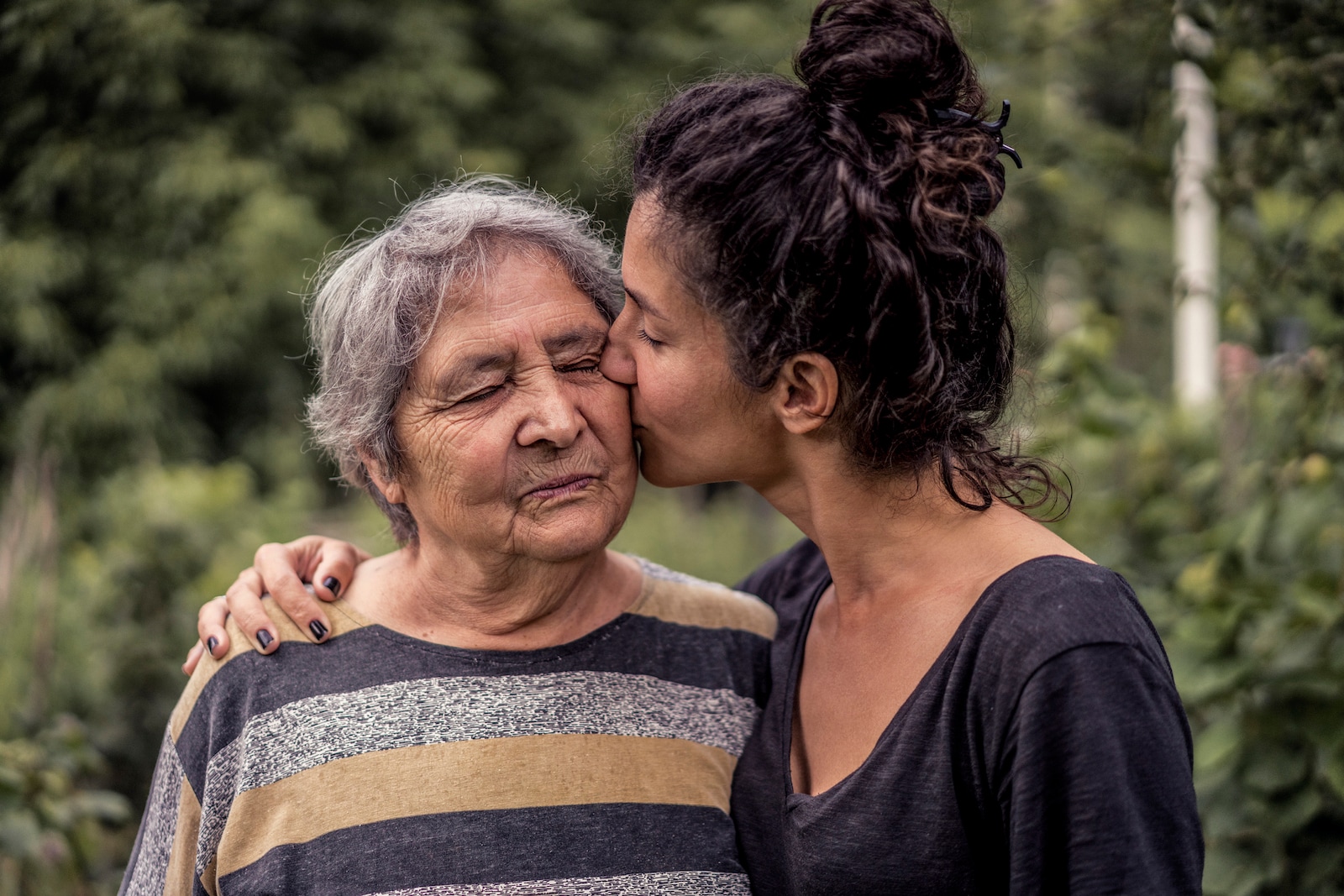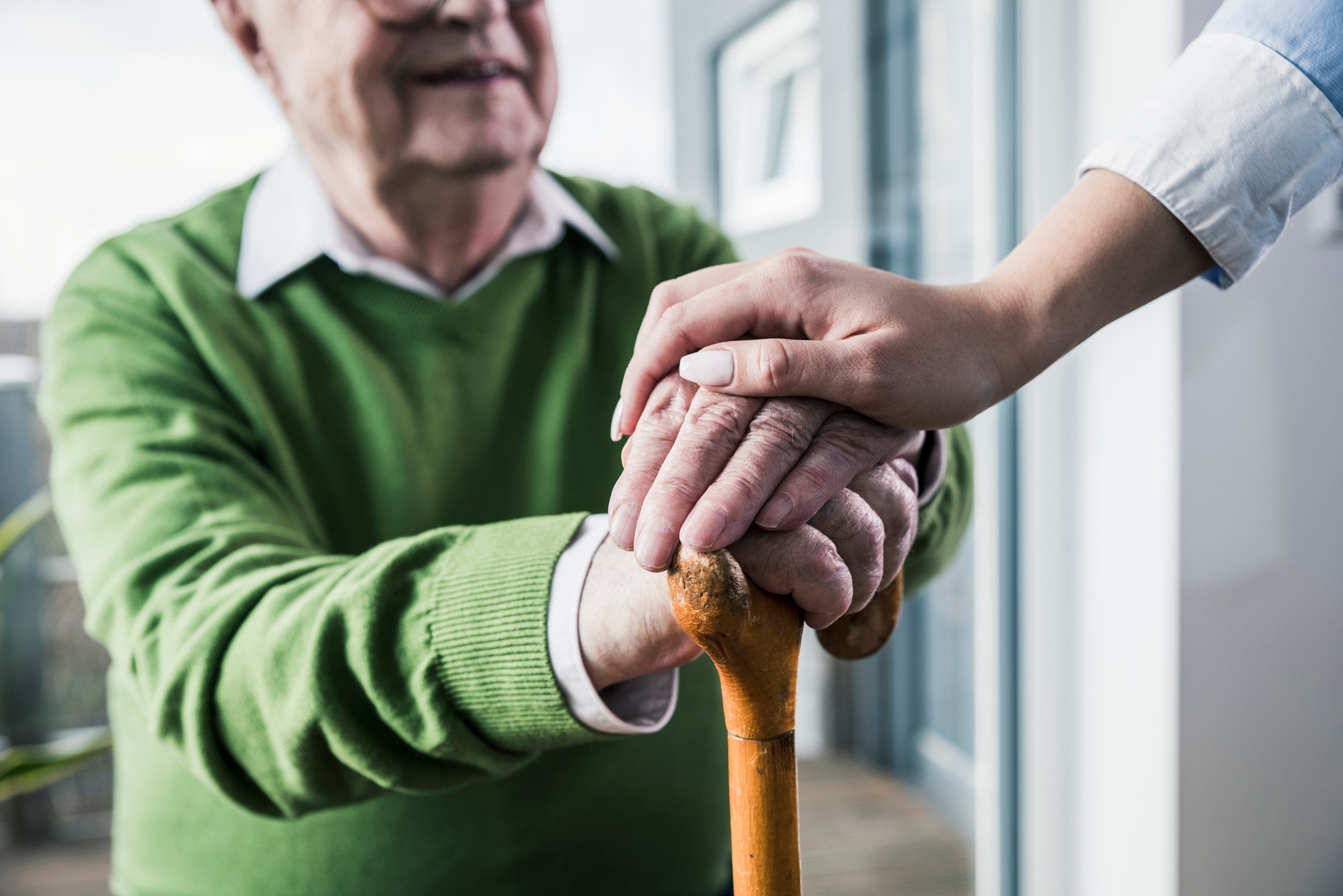In this article
When Susana Marquez’s father passed away eight years ago, she knew right away that, as an only child, caregiving for her mother would fall solely on her shoulders. Marquez had her mother move in with her so she could simultaneously care for her and her own young son, while simultaneously running her therapy business, Wellness Para La Mama.
“It highly impacts the rest of my life because I have to make sure my schedule is open for my mom’s needs,” says Marquez, who lives in Long Beach, California.
The licensed marriage and family therapist divides her time between scheduling and driving her mother to doctor’s appointments, calling in and picking up meds, grocery shopping, cooking and cleaning. Her responsibilities as a caregiver are also exacerbated by challenges like language barriers, cultural expectations that she cares for her mother (as opposed to a facility or in-home care provider) and having little external support. As a result, Marquez admits to feeling burnout, recognizing she has little time for herself.
Marroquin’s experience is one that many in the Latinx community face. In fact, according to a 2022 study, Latinos make up 21% (one-fifth) of the estimated 40 million family caregivers in the United States. Moreover, these caregivers are about 43 years old on average (younger than other ethnic caregiver groups) and are frequently simultaneously raising their own children.
But why? And what kind of toll does it take on the community? Here, what experts point to as the key reasons more Hispanic and Latinx people are caring for aging loved ones, as well as the unique challenges they’re facing and what can be done to address them.
Why many people in the Latinx community are family caregivers
Experts and research point to the following reasons for why more non-white Hispanics are navigating unpaid, family caregiving roles.
A sense of duty
According to case studies conducted by the Panorama of Aging and Long-Term Care, Latin American families tend to rely on unpaid care within the home for their aging loved ones across the board. Culturally speaking, Hispanic and Latinx children are raised knowing that someday they will need to care for their parents the way they were cared for.
“In Spanish, there really isn’t a word for ‘caregiver.’ It’s just natural in our culture to care for your loved ones.”
— Ruby Rendon, coordinator for the Hispanic Outreach program at the Muhammad Ali Parkinson Center
“In my experience, those who are acting as a caregiver are often very eager and happy to help their family,” says Ruby Rendon, coordinator for the Hispanic Outreach program at the Muhammad Ali Parkinson Center at Barrow Neurological Institute in Phoenix, member of the Parkinson’s Foundation Hispanic Parkinson’s Advisory Council and caregiver of a family member with Parkinson’s disease. “In Spanish, there really isn’t a word for ‘caregiver.’ It’s just natural in our culture to care for your loved ones.”
Religious pressure may be a factor
“Religion also plays a role in caregiving duties,” says Marroquin.
While more Latinxs are becoming religiously unaffiliated (roughly 30%), Pew Research reports that the majority still follow some form of faith, the majority of which are practicing Catholics, followed by Evangelical Protestants.
Marroquin believes religion causes Latinx adults to feel they have a “godly” duty to be “good” children and that this correlates with making sure they are caring for their parents and not passing on that responsibility to others.
In part due to this religious pressure (which is mainly rooted in Christianity), there is also often a belief that families must “sacrifice” for one another. Marroquin says that because Latinx children grow up seeing and hearing about their parent’s sacrifices for them, they also grow up with this sense of being indebted to their parents as well.
“We [feel like we] have to do the same, because in reality, we [generally] have access to more resources, including finances,” says Marroquin.
A stigma against asking for help
While there’s nothing wrong with feeling compelled or even honored to care for a loved one, it’s different when one realizes they’re in over their head and feel unable to ask for help. Many Latinx kids grow up hearing their elders shun nursing homes and retirement communities, or even hiring outside help for in-home care, which can have a negative impact in a number of ways.
“[My mom] regularly says things like, ‘We don’t put our family in homes,’ and ‘That’s not what Mexicans do,” says Ashley Marie Mireles, a director of sales and marketing at family book publisher Familius.
Mireles, who is based in Fresno, California, became a caregiver in late 2019, alongside her mother and aunt, for her grandmother who had been diagnosed with Alzheimer’s two years earlier. While she was glad to do it, she says it’s not always easy, and her recommendations to hire outside help have largely been ignored.
“There is a stigma around hiring outside help or sending folks to assisted living facilities,” says Mireles. “I’ve seen it so much in my own family, but I’ve also seen it in my partner’s family. His grandmother had a stroke which left her in a wheelchair and unable to perform basic tasks. The doctors recommended sending her to a facility that would perform these tasks for her, but his family refused.”
Mireles says she also knows her relatives wouldn’t want people to gossip about sending family to assisted living. “I think it’s rooted in the idea that we don’t ‘abandon’ family,” she adds.
But sometimes the stigma doesn’t just affect the caregiver.
“Typically, there’s a lot of reluctance from the one who needs care to ask for help from their loved ones,” says Rendon.
Unique challenges family caregivers in the Latinx community face
From a lack of multilingual resources to issues of financial strain and beyond, experts agree these these challenges create additional hurdles for Latinx caregivers.
Language barriers
According to Pew Research, roughly one-third of all Hispanics in the U.S. are not proficient in English, most of whom are foreign-born, and many of whom are older adults who may be in need of care soon if not already. Even among those who are bilingual in English and Spanish, nearly half of those ages 65 and older still tend to prefer communicating in Spanish. While many doctors’ offices and hospitals seem to be meeting this need by providing bilingual and multilingual paperwork and translation services, they aren’t always available.
“When I was younger, one of the biggest struggles was trying to talk to the older generation about healthcare because there wasn’t a lot of information in Spanish, and there were English words they didn’t understand,” says Mireles. “I don’t find that to be as big of a problem now.”
She says she’s been fortunate to find all the Alzheimer’s pamphlets given to her for her grandmother’s diagnosis were in Spanish, which made it easier to explain to other relatives.
However, this still isn’t the case for everyone. For Latinx Brazilians, as well as Indigenous Mexican and other Central American immigrants who speak languages other than Spanish, there are even fewer resources available in their native languages.
Financial impact
According to the Family Caregiver Alliance, Hispanics spend an average of 30 unpaid hours caring for older or impaired relatives per week, while the average Hispanic caregiver household income was around $38,600 as of 2021 (well below the $54,700 national salary average). This impact on finances results in deeper financial strain for Hispanic families, which can also impact their ability to pay for certain forms of medical care for their loved ones or themselves as they age. It also means there is less opportunity to develop generational wealth in the long run.
For individuals who do paid work while also providing care, there is often a risk of losing steady employment due to the amount of appointments that are needed as well as general care that must be provided.
“Financially, members of the community often don’t find themselves in positions to take time off work to accommodate special appointments,” says Rendon.
Mireles says she often needs to schedule her work meetings around her caregiving responsibilities, and while their routine mostly works, there are some off days.
“I’ve had to cancel or leave a meeting mid-Zoom because [my grandmother] left the water running in the bathroom and overflowed a sink. I’ve also had to cancel full days of work because when I got to her house in the morning I noticed the signs of a bad day coming,” says Mireles, pointing out a particular day when her grandmother tried to leave the house unaccompanied.
She says she’s grateful that her employer is flexible and allows her to make her own schedule and take breaks as needed but recognizes others may not be so fortunate.
“Typically, traditional family expectations in these communities is that women are responsible for caregiving, and this can add financial and emotional strain on the specific caregiver if they are not equipped to handle it.”
— Bianca Padilla, CEO and co-founder of Carewell
Gendered expectations
Despite Latinas working hard over generations to break away from gender norms around being stay-at-home wives and mothers, the stereotypes continue to adversely affect them when it comes to caregiving. At the start of the pandemic in 2020, we saw more Latinas leaving the workforce out of any other group, spending 8% less time on paid work-related activities than in 2019, and 30% more time as caregivers in their households. By August of 2022, we still had 1.4 million Latinas not working due to caregiving responsibilities, about the same amount as when the pandemic first began.
“Typically, traditional family expectations in these communities is that women are responsible for caregiving and this can add financial and emotional strain on the specific caregiver if they are not equipped to handle it,” says Bianca Padilla, CEO and co-founder of Carewell, a Latinx family-founded, full-service resource for family caregivers.
This often results in career setbacks for professional Latinas who are trying to achieve higher salaries and higher positions in the workforce but find themselves having to take a step back to provide care for relatives.
How to counter these issues
Being aware of the challenges is the first step, of course, but Padilla and Rendon both have plenty of tips on what Latinx individuals can do to improve their overall outlook.
In addition to pushing for big picture change like advocating that health care providers address language barriers, here are a few they note:
1. Check out bilingual resources and tips for aging adults and their caregivers
While translators aren’t always readily available, there are some bilingual resources out there to help aging adults and their caregivers.
- The National Institute of Health’s main Alzheimer’s website has recently expanded to include a fully Spanish language version, complete with information for patients and caregivers.
- The Family Caregiver Alliance also has a dedicated space that includes informative videos about a variety of caregiving topics in Spanish.
- Additionally, for those caring for aging Latinx relatives with Parkinson’s, Rendon points to the Parkinson’s Foundation’s bilingual helpline (1-800-4PD-INFO), as well as online resources including videos created especially for Spanish-speakers affected by Parkinson’s disease.
- Caregivers can search the U.S. Department of Labor’s website for links to many of these resources in a variety of languages, including Spanish and Portuguese.
- The official website for the Americans with Disabilities Act also includes a Spanish-language section.
- To find additional benefits at the federal, state, and local level, for things like medicine and medical insurance, food and housing assistance, veterans benefits, and more, BuscaBeneficios.org is an excellent resource—and it’s all in Spanish.
Rendon also advises caregivers to become educated and aware of all the resources available to them.
“Leveraging our state and federal options for all they can offer and taking advantage of community-based programs, like those offered by the Muhammad Ali Parkinson Center and the Parkinson’s Foundation, can be incredibly empowering and helpful,” says Rendon. “Similarly, get an understanding of FMLA (the Family and Medical Leave Act), as well as ADA (Americans With Disabilities Act) claims and options for employment and living for those who qualify.”
Additionally, when facing language barriers, Padilla recommends seeking out bilingual facilities when possible, as well as calling ahead of appointments to inquire about their ability to bring in a translator.
2. Plan ahead financially
Padilla reminds families that they should work together to set up caregiving funds so that caregivers are still “compensated” for their time. While families and other loved ones can work together early on to set up a fund for the designated caregiver, we’ve also covered additional ways in which to become a paid caregiver via government, veteran, and other caregiving programs.
“[Compensation for] caregivers can be through something like a family fund or a reduction in money they spend contributing to other life costs,” says Padilla.
3. Choose more accessible long-term housing
When it comes to the possibility of becoming a caregiver, Padilla recommends considering living near the relative you’ll be caring for, or choosing a home with a spare bedrooms. “Make sure the space has no steps, stairs, or tricky pathways when able. Communicate future living arrangement plans early on,” she says.
4. Opt for flexible work, when possible
Padilla also urges Latinx individuals to try and seek flexible and supportive employment whenever possible to work against the financial hits so many experience when they suddenly find themselves becoming caregivers. The pandemic has made it clear that many individuals can work remotely, which is one way to ensure you have more flexibility with your time.
“Normalize that it is OK to ask for help. Incorporate others, delegate tasks to other family members (when possible), say no when you can’t take anymore and set boundaries around how much you can help.”
— Susana Marquez, founder of Wellness Para La Mama
The bottom line on bringing providing support for the Hispanic and Latinx caregiving community
While the challenges Hispanic and Latinx caregivers face are numerous and stressful, there are concrete ways to combat them. For caregivers like Marquez and Mireles, it mostly comes down to recognizing they can’t do it all on their own.
“Normalize that it is OK to ask for help. Incorporate others, delegate tasks to other family members (when possible), say no when you can’t take anymore and set boundaries around how much you can help,” says Marquez.
Mireles says when she tried to discuss the realities of caregiver burnout, her mother quoted a popular saying on Latinx social media: “Nothing can bury us because we are seeds.”
“But,” Mireles says, “I think people forget that seeds need water and care, too.”
For more information, check out our guide to family caregiver resources.





